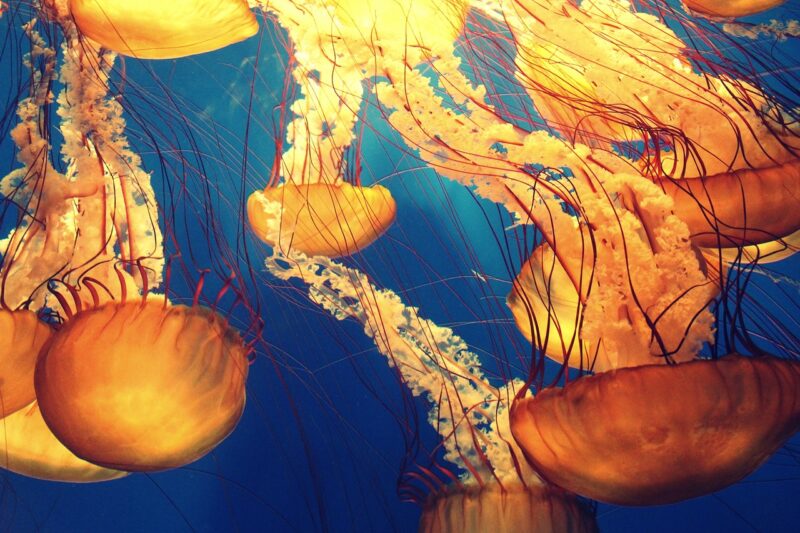The Strangest and Most Unexplained Phenomena Ever Recorded in the World’s Deepest Oceans
November 17, 2024

The ocean is one of the least explored frontiers on our planet, covering over 70% of the Earth’s surface and harboring countless wonders, many of which remain shrouded in mystery. While we have mapped much of the seafloor and explored various marine environments, the depths of the world’s oceans continue to unveil phenomena that challenge our understanding of nature. In this article, we will delve into some of the strangest and most unexplained phenomena ever recorded in the depths of our oceans, revealing fascinating insights into this mysterious realm.
1. The Mariana Trench: Home to Unbelievable Discoveries
The Mariana Trench, located in the western Pacific Ocean, is the deepest part of the world’s oceans, plunging about 36,000 feet (11,000 meters) at its deepest point, known as Challenger Deep. Fascinatingly, much of this trench remains unexplored, and what little we do know has revealed extraordinary creatures and phenomena.
Experts recently discovered translucent creatures that thrive in extreme depths where sunlight cannot penetrate. One such creature is the amphipod known as the “deep-sea snailfish,” which has adapted to the crushing pressures of the deep. Scientists have also documented bioluminescent organisms in this trench that emit stunning lights, creating a kaleidoscope of colors in the inky blackness.
Yet, even more astonishing is the presence of unexplained sounds, known as the “Bloop” among oceanographers. Detected in 1997, this ultra-low-frequency sound remains unidentified and has captured the imagination of scientists and enthusiasts alike. Some believe it originates from massive icebergs cracking, while others speculate about unknown marine life.
2. The Yonaguni Monument: A Submerged Enigma
Off the coast of Japan lies the Yonaguni Monument, an underwater structure that has sparked debates among archaeologists and geologists. Discovered in the 1980s, the monument features terraces, steps, and linear formations that resemble man-made structures.
While some experts argue that it is a natural rock formation shaped by geological processes, others believe it could be remnants of an ancient civilization. The site has drawn considerable interest due to its mysterious origin, leaving many questions unanswered: is it an advanced civilization lost to the sea, or simply a quirk of nature?
3. The Bermuda Triangle: Myths Amidst Truths
The Bermuda Triangle, an area of the North Atlantic Ocean bounded by Miami, Bermuda, and San Juan, Puerto Rico, has long been associated with mysterious disappearances of ships and aircraft. While some dismiss these claims as myths or exaggerations, others point to bizarre currents, electromagnetic anomalies, and rogue waves as potential explanations.
One intriguing theory posits the existence of underwater methane hydrates. When released in large quantities, these gas pockets can cause significant disturbances in water density, potentially leading to sudden sinking of vessels. Despite extensive research, the phenomena associated with the Bermuda Triangle remain enigmatic and continue to perplex scientists.
4. Bioluminescence: Nature’s Underwater Luminescence
Bioluminescence is a phenomenon exhibited by various marine organisms, characterized by their ability to produce light through chemical reactions. While this isn’t inherently mysterious, the depth and variety of bioluminescent species are astonishing. From glowing jellyfish to luminescent plankton, these organisms create stunning underwater displays.
One intriguing case is the glow produced by the tiny marine organism known as *Pyrocystis fusiformis.* When agitated, these plankton illuminate the water with a vibrant blue glow. Similar displays have been observed in a range of marine environments, creating an enchanting spectacle that is both beautiful and mysterious. Why do these organisms glow? Some theories suggest that bioluminescence serves as a defense mechanism or a way to attract mates.
5. Underwater Volcanic Activity: The Hydrothermal Vents
Underwater volcanic activity leads to the creation of hydrothermal vents, which expel superheated water rich in minerals. These vents are often found near tectonic plate boundaries and are home to unique ecosystems featuring extremophiles—organisms that thrive in extreme conditions.
What makes these vents particularly remarkable is the absence of sunlight; the ecosystems they support rely on chemosynthesis rather than photosynthesis. A mysterious form of life exists around these vents, including giant tube worms and unique species of shrimp that have never been seen anywhere else. Understanding the formation and growth of these ecosystems presents a continuing mystery for scientists as they explore these undersea wonderlands.
6. The Great Blue Hole: A Submarine Sinkhole
Located off the coast of Belize, the Great Blue Hole is a giant marine sinkhole that measures about 300 meters (984 feet) across and over 120 meters (394 feet) deep. While it is a popular diving destination, it remains partially unexplored.
The bizarre formations seen within the Great Blue Hole include stalactites and columns that suggest it was formed during the last Ice Age. However, questions still linger about its formation and biological significance. As divers explore this mesmerizing underwater world, they continuously discover new species, further showcasing the mystery of deep-sea ecosystems.
7. The Invisible Nightlight: The 2018 Deep-Sea Wonder
In 2018, scientists in the Pacific Ocean observed a fascinating phenomenon: a massive jellyfish, known as the *Turritopsis dohrnii,* which is often referred to as the “immortal jellyfish.” Its unique ability to revert to its juvenile form after maturing poses questions about biological immortality.
Additionally, researchers recorded a magnificent shimmering light display during certain conditions, suggesting a correlation between jellyfish movements and bioluminescence that was previously unexplored. Such observations have raised queries among ecologists about how these jellyfish could influence their local ecosystems and the deep waters around them.
Conclusion: The Infinite Mystery of Our Oceans
The depths of the oceans continue to amaze and astound with their unexplored territories and unexplained phenomena. From the peculiar adaptations of deep-sea creatures to mysterious underwater formations, each discovery unveils new questions about our planet’s history and the life it sustains.
As technology advances and more exploration occurs, we may yet uncover secrets hidden beneath the waves. For now, the ocean remains an enigmatic tapestry of life, phenomena, and stories waiting to be told—a realm where science meets mystery and creativity thrives amidst the depths.
Whether you are an ocean enthusiast, a curious explorer, or just someone interested in the wonders of our planet, the stories of these strange phenomena remind us of the vast unknown that still exists, just waiting to be discovered.








